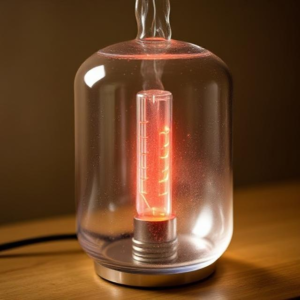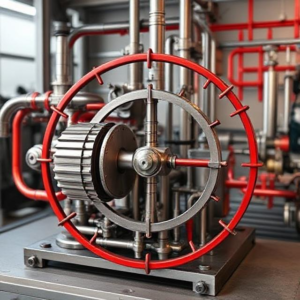Joule-Thomson Effect: Explained Simply
The Joule-Thomson effect is a phenomenon in physics that happens when a gas is allowed to expand or flow through a valve or porous plug, causing a change in its temperature.

Let’s break it down:
- What is it?
- The Joule-Thomson effect refers to the change in temperature of a gas when it is allowed to expand without doing any work (i.e., it doesn’t move a piston or generate energy) and without exchanging heat with its surroundings.
- How does it happen?
- When a gas expands from high pressure to low pressure, its molecules spread out more. The behavior of the gas depends on the temperature and type of gas:
- For most gases (like air, nitrogen, and carbon dioxide), the gas cools down when it expands.
- But for some gases, like hydrogen and helium, the gas heats up when it expands.
This temperature change happens because the molecules of the gas interact with each other. When the gas expands, the molecules can do less work by colliding with each other, and they lose energy, which results in cooling.
- When a gas expands from high pressure to low pressure, its molecules spread out more. The behavior of the gas depends on the temperature and type of gas:
- Why does it cool down or heat up?
- It depends on how tightly packed the gas molecules are and how strong the forces between them are.
- If the gas molecules are loosely packed (like hydrogen or helium), they move around quickly and do not interact much with each other. So, when they expand, they gain energy, which can cause the gas to heat up.
- If the gas molecules are closely packed (like nitrogen or oxygen), they interact more. When they expand, they lose energy, and that makes the gas cool down.
- It depends on how tightly packed the gas molecules are and how strong the forces between them are.
Real-Life Example:
Imagine you have a can of compressed air (like the ones used to clean computers). When you release the air through the nozzle, you feel the nozzle getting cold. This cooling happens because the air is expanding rapidly and the molecules lose energy, which leads to a drop in temperature. This is an example of the Joule-Thomson effect in action.
Applications of Joule-Thomson Effect:
- Refrigeration:
- The Joule-Thomson effect is used in refrigeration systems. Liquefied gases like nitrogen, oxygen, and natural gas are cooled by expanding through a valve, which causes them to lose energy and become cold.
- Air Conditioners:
- In air conditioners and heat pumps, gases are compressed and then allowed to expand through a valve, causing cooling and helping to lower the temperature of the air inside the room.
- Cryogenics:
- Cryogenics is the science of very low temperatures. The Joule-Thomson effect is used to produce very low temperatures by expanding gases in controlled ways.
Key Points to Remember:
- Joule-Thomson effect: A change in temperature when a gas expands at constant enthalpy (without heat exchange).
- Most gases cool down when they expand, but some gases (like hydrogen and helium) heat up when they expand.
- This effect is used in many technologies, including refrigeration and air conditioning.
Summary :
The Joule-Thomson effect is when a gas either cools down or heats up when it expands without doing work or exchanging heat. Most gases cool down, but some gases heat up. It’s used in things like refrigerators and air conditioners to help cool down spaces.











